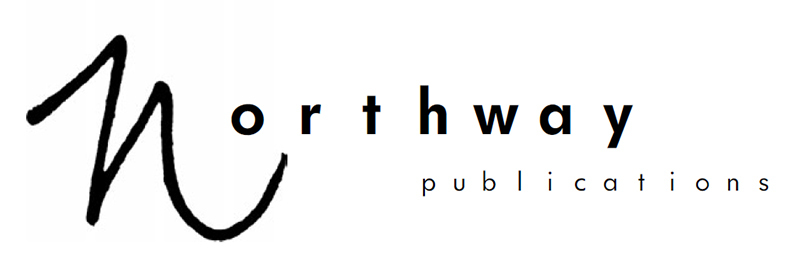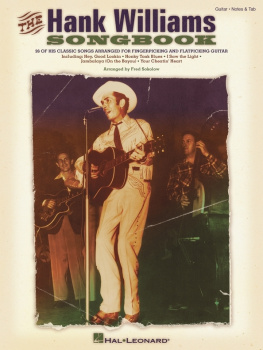NOTES
Chapter One Early Messages
John Litweiler, The Integrity of the Artist the Soul of the Man, DownBeat , March 29th 1973.
Larry Kart, sleeve notes to Blue Note GXF 3066 (Japan).
Bob Blumenthal, sleeve notes to Mosaic MD6181.
Alyn Shipton, A New History of Jazz (London: Continuum, 2001) p.679.
Richard Cook and Brian Morton, The Penguin Guide to Jazz on CD , fourth edition (London: Penguin Books, 1998).
Bob Blumenthal, sleeve notes to Blue Note 32148-2 and 32149-20.
Chapter Two A Leader on Records
Bob Blumenthal sleeve notes to BLP 75339.
Bob Blumenthal, sleeve notes to Mosaic MD6-181.
Chapter Four The Jazz Life
John Litweiler, The Integrity of the Artist the Soul of the Man, DownBeat March 29th 1973.
Robert Levin, sleeve notes to Blue Note 1550.
J. C. Thomas, Chasin the Trane The Music and Mystique of John Coltrane (London: Elm Tree Books, 1976).
John Litweiler, as above.
Chapter Five Poppin and the Curtain Call Sessions
Nat Hentoff, sleeve notes to Blue Note LP 84425.
Larry Kart, sleeve notes to GXF 3066.
Chapter Six Soul Station
Max Harrison et al., Modern Jazz The Essential Records (London: Aquarius Books, 1978).
Joe Goldberg, sleeve notes to BLP 4034.
Chapter Seven Working Out
Sleeve notes to Sony/Columbia Legacy CK65919.
John Szwed, So What: The Life of Miles Davis (London: William Heinemann, 2002).
Miles Davis with Quincy Troupe, Miles, the Autobiography (London: Macmillan, 1989).
Jazz Journal International , March 2004.
Miles Davis, Friday & Saturday Nights at the Black Hawk , Complete Sony/Columbia Legacy, C2K 87097 and C2K 87100.
Chapter Eight The Turnaround
John Litweiler, The Integrity of the Artist the Soul of the Man, DownBeat March 29th 1973.
DownBeat , August 16th 1961.
John Litweiler, as above.
Leonard Feather, sleeve notes to Blue Note 84080.
Del Shields, sleeve notes to Blue Note 84186.
Chapter Nine Consolidation
Ronald Atkins, review of Eric Dolphys Out to Lunch in Max Harrison, Modern Jazz: The Essential Records (London: Centurion Books, 1975, p.112).
Ira Gitler, sleeve notes to Blue Note 84230.
John Litweiler, sleeve notes to Blue Note 97506.
Jazz Spotlight News , Volume 2, No. 1, Summer 1980 and John Litweiler, DownBeat , March 29th 1973.
Chapter Ten Europe
Dave Gelly, Terse Tenor, Jazz Journal , September 1986, p.112.
Val Wilmer, Daddy of the Hard Bop Tenor, Melody Maker , May 11th 1968.
Bob Dawbarn, Melody Maker , May 25th 1968.
Leonard Feather sleeve notes to Blue Note 84329.
Chapter Eleven The Enigma of Hank Mobley
Michael James, Hank Mobley, Jazz Monthly , October 1961.
Chapter Twelve Coming Home
Simon Spillett, Hank Mobley in Europe 196870, Jazz Journal International , January 2004.
WORKOUT
The Music of Hank Mobley
Derek Ansell

www.northwaybooks.com
Workout first published by Northway, 2008; in ebook format, 2014.
Derek Ansell 2008.
The right of Derek Ansell to be identified as author of this work has been asserted by him in accordance with the Copyright, Designs and Patents Act 1988. All rights reserved. No part of this book may be reproduced, stored in a retrieval system or transmitted, in any form or by any means without prior permission in writing of the publisher, nor be otherwise circulated in any form of binding or cover other than that in which it is published and without a similar condition including this condition being imposed on the subsequent purchaser.
Cover photo of Hank Mobley at the Rudy Van Gelder Studio, Englewood Cliffs, New Jersey, on March 18th 1966 for his A Slice of the Top recording session. Photo by Francis Wolff, Mosaic Images. The publishers acknowledge with thanks the generous assistance of Michael Cuscuna. Visit www.mosaicimages.com for information on obtaining prints of Francis Wolff photographs.
Cover design by Adam Yeldham of Raven Design.
Ebook conversion by www.leeds-ebooks.co.uk
The author, Derek Ansell
Derek Ansell has lived in Berkshire, England, for the past forty years. He writes regular reviews of live jazz and classical music for magazines and newspapers and has contributed more than two hundred articles and numerous interviews, record and book reviews to Jazz Journal International . His book about the music and life of Jackie McLean, Sugar Free Saxophone , was published by Northway in 2012.
He is the author of several novels including The Whitechapel Murders , a fictional account of the notorious Jack the Ripper murders in London in 1888, and My Brothers Keeper published in 2014.
CONTENTS
ACKNOWLEDGEMENTS
My thanks are due to David Nathan at the National Jazz Archive at Loughton, Essex, for digging out some features on Hank Mobley from the 1960s and 1970s. These articles from Jazz Monthly, Jazz Journal and Melody Maker were very helpful.
The editor and staff at DownBeat magazine provided a copy of the one important interview Hank gave, to John Litweiler in 1973, which opened a few doors to his character and motivation. They also gave permission to quote from this interview. Simon Spillett, a tenor saxophonist who claims Mobley as one of his favourite tenor players, not only helped with permission to quote from his articles on Hank in Jazz Journal International in 2003 and 2004 but also, very kindly, sent me copies of tapes with music not generally available and known only to a few collectors. I have also appreciated the support of Michael Cuscuna and the staff at Mosaic Records.
My own collection of Mobley records is fairly substantial but some gaps were filled when Eddie and Janet Cook sent me new Mobley reissues to review for Jazz Journal International , including the rare Debut sessions now available on Jazz Door Records. Information gleaned from record sleeve notes and reviews, in particular those by John Litweiler, have all proved useful.
My sincere thanks to all concerned.
Derek Ansell
INTRODUCTION
Hank Mobley was unique. He was much admired by other musicians, many of whom rated him as one of the very greatest modern stylists, and a tenor saxophonist who sold more records than almost anybody else on the Blue Note label. Yet he still managed to attract a lot of flack, at best, from critics and jazz commentators who undervalued his solo strengths and contributions to modern jazz and, at worst, from those who regarded him as obscure and unimportant.
A jazz musician who recorded twenty-five LPs as a leader for one independent record label and more for other companies can hardly be called obscure. Add in numerous sideman appearances in the 1950s and 1960s far more than most musicians in his sphere, and a face that was well-known from liner photographs and even made the cover shot of The Blue Note Years: The Jazz Photography of Francis Wolff and you have a significant musician. And yet Hank Mobley was consistently underrated, unfavourably compared with some of his more flamboyant contemporaries of the day and never really given his due as a consistently inventive and often innovative tenor sax soloist and a composer of considerable skill and imagination.
Should you wish to know more about the major jazz musicians who made their names in the 1950s and 1960s, you will find plenty of books about John Coltrane, Sonny Rollins and other key figures of the bop and hard bop movements of that time, but until now there has not been one about Hank Mobley. Why? The general consensus seems to be that Coltrane, Rollins and even lesser talents such as Johnny Griffin, possessing hard, edgy tones in the fashion of the day, all tended to overshadow Mobleys quieter approach.
Next page








